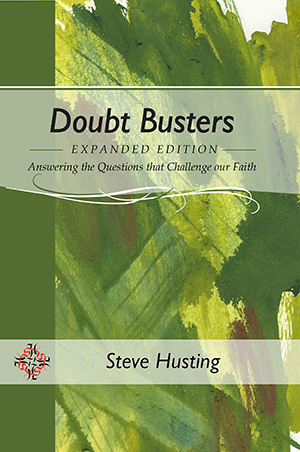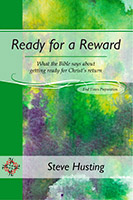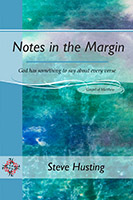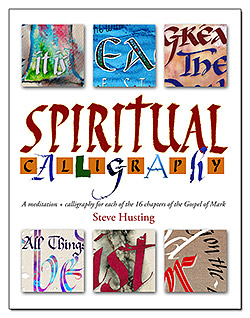I decided to examine the nativity accounts myself to see what the mystery is all about. (Spoiler alert: there’s no mystery; they work together perfectly.) I first made two columns on a sheet of paper and listed the main events of each book’s chapter two, and especially the locations of each event. My goal was to match up the events by similar location. I wanted to see if I could find a literal, historical account.
Before going further, let’s recap Matthew 2 and Luke 2.
In Matthew’s gospel, the nativity scene is actually in the very last verse of chapter one, where Mary is found to be with child after being betrothed to Joseph. An angel appears to Joseph and informs him that the child is from the Holy Spirit. Then a summary verse is given that He is born. Chapter two verse one tells us that Jesus was born in Bethlehem.
In chapter two, wise men came from the east to Jerusalem, to Herod, then to Bethlehem, following a star. They give gifts to the “young Child,” then depart home secretly to avoid Herod. Joseph is warned to flee to Egypt and the family goes. Herod kills children two years old and under not only in Bethlehem, but up and down the coast in the area. Joseph takes his family to Nazareth in Galilee after Herod’s death.
Luke chapter two has entirely different events happening, with much more detail surrounding Jesus’ birth:
In Luke chapter two, Joseph and Mary travel from Nazareth, which is way above Jerusalem, down south to their home town of Bethlehem, which is just outside of Jerusalem, slightly south. There, Jesus is born, we meet the angels singing “Glory in the highest,” and the shepherds come.
Eight days later, they are in Jerusalem and meet Simeon and Anna, who prophecy of Him.
Then they return north “to their own city, Nazareth.”
One thing we see is that Luke records more of the events surrounding Jesus’ birth than Matthew does. Matthew makes only one reference to His birth: “and did not know her till she had brought forth her firstborn Son. And he called His name Jesus” (Matt. 1:25).
Then I tried to connect up the events in similar cities in both chapter 2s and make them belong to each other. I utterly failed in my attempts to merge the two chapters.
Then I noticed a verse at Luke 2:41 that the family went to Jerusalem every year for the Passover. This is a crucial verse. It helps us understand how the chapters harmonize. Luke 2 events happen first, then on one of their later yearly visits to Jerusalem (one or two years later) the Matthew 2 events happen.
So all of the events in Luke chapter 2:1-40 happen first. During this time, the wise men mentioned in Matthew 2 see the star and begin their long journey from the east. 1-2 years pass. By the time the holy family makes their yearly trek back to Jerusalem for the Passover and temporarily reside in a relative’s home in the “Hill Country” (where her cousin Elizabeth lives, see Luke 1:36-40), which includes the area around Bethlehem and Jerusalem, chapter 2 of Matthew then comes into play: the wise men make it to Jerusalem at that time, then to Bethlehem where they meet the future ruler, not as a babe, but now as a “young child” at a “house,” not a manger — see this in Matt. 2:9-11.
Herod then has children two years old and under killed, based on the timing of the wise men (Matthew 2:16); presumably they saw the star about two years ago, which likely appeared at the time Jesus was born, and it took a long time to travel from the east. Of course, the final verse of Matthew chapter one coincides with Luke’s chapter two account of His birth, both taking place in Bethlehem, since Matthew’s verse is only stating a simple fact.
There is nothing in these two accounts that confuse matters. But if we start with a wrong premise about the chapters, then we’ll end up with confusion. This is true about anything in life, not just the Bible. The two chapters were not meant to be merged accounts, but separate historical accounts occurring at different times in Jesus’ life.
If we have seen many images of the wise men kneeling at the foot of a baby in a manger to give gifts, then we’ll certainly be confused when we try to move verses around to make them fit the picture. But the picture is wrong to begin with. The wise men (the Bible doesn’t say how many there were), are not in the scene with the shepherds and angels; they come about two years later.
But there’s one more issue to throw into the mix.
In some translations for Matthew 2:1, such as the KJV, we have “when” Jesus was born in Bethlehem. In other versions, such as the NKJV, we have “after” Jesus was born in Bethlehem. When I looked at an interlinear to look more closely (http://www.scripture4all.org/OnlineInterlinear/NTpdf/mat2.pdf) I don’t see either word spelled out. I suspect these words were added by the translators to keep the sentence grammatically correct. However, I see “after” used in this translation at the end of the page: https://wermuthsgreekbook.files.wordpress.com/2008/03/genitive-absolute-pdf.pdf Please note that I am not a student of the Greek New Testament, so this is not a final word on the matter. But “after” makes perfect sense, since the wise men came after Jesus was born, not when He was born.
The use of “when” in Matthew 2:1 misleads the reader into thinking the birth was quickly followed by the wise men’s arrival. Again, the men visit a “young Child,” not a baby, in a “home,” not a manger. They did not happen immediately one after the other, but with a gap of about 1 year.
So we can blame in part the 2:1 translation of “when” Jesus was born connected to the story of the wise men as introducing some difficulties.
Perhaps the last verse of Matthew 1 should therefore read: “and did not know her till she had brought forth her firstborn Son. And he called His name JESUS. Jesus was born in Bethlehem of Judea.”
Chapter 2:1 should say, “In the days of Herod the king, behold, wise men from the East came to Jerusalem,” The chapter and verse breaks are not in the manuscripts from which we translate God’s word; they were added by man at a later date.
My current nativity sequence is: Matt. 1:18-24, Luke 2:1-7, Matt.1:25-2:1a (up to before mention of wise men), Luke 2:8-41, [insert 1-2 year gap], Matt. 2:1b-23.
Below are the complete verses in the above sequence [World English Bible (WEB)].
Matthew 1:18-24
18 Now the birth of Jesus Christ was like this: After his mother, Mary, was engaged to Joseph, before they came together, she was found pregnant by the Holy Spirit. 19 Joseph, her husband, being a righteous man, and not willing to make her a public example, intended to put her away secretly. 20 But when he thought about these things, behold, an angel of the Lord appeared to him in a dream, saying, “Joseph, son of David, don’t be afraid to take to yourself Mary as your wife, for that which is conceived in her is of the Holy Spirit. 21 She shall give birth to a son. You shall name him Jesus, for it is he who shall save his people from their sins.”
22 Now all this has happened that it might be fulfilled which was spoken by the Lord through the prophet, saying,
23
“Behold, the virgin shall be with child,
and shall give birth to a son.
They shall call his name Immanuel,”
which is, being interpreted, “God with us.”Isaiah 7:14
24 Joseph arose from his sleep, and did as the angel of the Lord commanded him, and took his wife to himself;
Luke 2:1-7
1 Now in those days, a decree went out from Caesar Augustus that all the world should be enrolled. 2 This was the first enrollment made when Quirinius was governor of Syria. 3 All went to enroll themselves, everyone to his own city. 4 Joseph also went up from Galilee, out of the city of Nazareth, into Judea, to David’s city, which is called Bethlehem, because he was of the house and family of David; 5 to enroll himself with Mary, who was pledged to be married to him as wife, being pregnant.
6 While they were there, the day had come for her to give birth. 7 She gave birth to her firstborn son. She wrapped him in bands of cloth, and laid him in a feeding trough, because there was no room for them in the inn.
Matthew 1:25
25 and didn’t know her sexually until she had given birth to her firstborn son. He named him Jesus.
Matthew 2:1a
1a Now when Jesus was born in Bethlehem of Judea in the days of King Herod,
Luke 2:8-41
8 There were shepherds in the same country staying in the field, and keeping watch by night over their flock. 9 Behold, an angel of the Lord stood by them, and the glory of the Lord shone around them, and they were terrified. 10 The angel said to them, “Don’t be afraid, for behold, I bring you good news of great joy which will be to all the people. 11 For there is born to you today, in David’s city, a Savior, who is Christ the Lord. 12 This is the sign to you: you will find a baby wrapped in strips of cloth, lying in a feeding trough.” 13 Suddenly, there was with the angel a multitude of the heavenly army praising God, and saying,
14
“Glory to God in the highest,
on earth peace, good will toward men.”
15 When the angels went away from them into the sky, the shepherds said to one another, “Let’s go to Bethlehem, now, and see this thing that has happened, which the Lord has made known to us.” 16 They came with haste, and found both Mary and Joseph, and the baby was lying in the feeding trough. 17 When they saw it, they publicized widely the saying which was spoken to them about this child. 18 All who heard it wondered at the things which were spoken to them by the shepherds. 19 But Mary kept all these sayings, pondering them in her heart. 20 The shepherds returned, glorifying and praising God for all the things that they had heard and seen, just as it was told them.
21 When eight days were fulfilled for the circumcision of the child, his name was called Jesus, which was given by the angel before he was conceived in the womb.
22 When the days of their purification according to the law of Moses were fulfilled, they brought him up to Jerusalem, to present him to the Lord 23 (as it is written in the law of the Lord, “Every male who opens the womb shall be called holy to the Lord,” Exodus 13:2, 12), 24 and to offer a sacrifice according to that which is said in the law of the Lord, “A pair of turtledoves, or two young pigeons” (Leviticus 12:8).
25 Behold, there was a man in Jerusalem whose name was Simeon. This man was righteous and devout, looking for the consolation of Israel, and the Holy Spirit was on him. 26 It had been revealed to him by the Holy Spirit that he should not see death before he had seen the Lord’s Christ. 27 He came in the Spirit into the temple. When the parents brought in the child, Jesus, that they might do concerning him according to the custom of the law, 28 then he received him into his arms, and blessed God, and said,
29
“Now you are releasing your servant, Master,
according to your word, in peace;
30
for my eyes have seen your salvation,
31
which you have prepared before the face of all peoples;
32
a light for revelation to the nations,
and the glory of your people Israel.”
33 Joseph and his mother were marveling at the things which were spoken concerning him, 34 and Simeon blessed them, and said to Mary, his mother, “Behold, this child is set for the falling and the rising of many in Israel, and for a sign which is spoken against. 35 Yes, a sword will pierce through your own soul, that the thoughts of many hearts may be revealed.”
36 There was one Anna, a prophetess, the daughter of Phanuel, of the tribe of Asher (she was of a great age, having lived with a husband seven years from her virginity, 37 and she had been a widow for about eighty-four years), who didn’t depart from the temple, worshiping with fastings and petitions night and day. 38 Coming up at that very hour, she gave thanks to the Lord, and spoke of him to all those who were looking for redemption in Jerusalem.
39 When they had accomplished all things that were according to the law of the Lord, they returned into Galilee, to their own city, Nazareth. 40 The child was growing, and was becoming strong in spirit, being filled with wisdom, and the grace of God was upon him. 41 His parents went every year to Jerusalem at the feast of the Passover.
- Insert gap of 1-2 years here before family returns to Jerusalem, per Luke 2:41, and Matt. 2:7 with Matt. 2:16
Matthew 2:1b-23
1b behold, wise men from the east came to Jerusalem, saying, 2 “Where is he who is born King of the Jews? For we saw his star in the east, and have come to worship him.” 3 When King Herod heard it, he was troubled, and all Jerusalem with him. 4 Gathering together all the chief priests and scribes of the people, he asked them where the Christ would be born. 5 They said to him, “In Bethlehem of Judea, for this is written through the prophet,
6
‘You Bethlehem, land of Judah,
are in no way least among the princes of Judah;
for out of you shall come a governor
who shall shepherd my people, Israel.’” (Micah 5:2)
7 Then Herod secretly called the wise men, and learned from them exactly what time the star appeared. 8 He sent them to Bethlehem, and said, “Go and search diligently for the young child. When you have found him, bring me word, so that I also may come and worship him.”
9 They, having heard the king, went their way; and behold, the star, which they saw in the east, went before them until it came and stood over where the young child was. 10 When they saw the star, they rejoiced with exceedingly great joy. 11 They came into the house and saw the young child with Mary, his mother, and they fell down and worshiped him. Opening their treasures, they offered to him gifts: gold, frankincense, and myrrh. 12 Being warned in a dream not to return to Herod, they went back to their own country another way.
13 Now when they had departed, behold, an angel of the Lord appeared to Joseph in a dream, saying, “Arise and take the young child and his mother, and flee into Egypt, and stay there until I tell you, for Herod will seek the young child to destroy him.”
14 He arose and took the young child and his mother by night and departed into Egypt, 15 and was there until the death of Herod, that it might be fulfilled which was spoken by the Lord through the prophet, saying, “Out of Egypt I called my son” (Hosea 11:1).
16 Then Herod, when he saw that he was mocked by the wise men, was exceedingly angry, and sent out and killed all the male children who were in Bethlehem and in all the surrounding countryside, from two years old and under, according to the exact time which he had learned from the wise men. 17 Then that which was spoken by Jeremiah the prophet was fulfilled, saying,
18
“A voice was heard in Ramah,
lamentation, weeping and great mourning,
Rachel weeping for her children;
she wouldn’t be comforted,
because they are no more.” (Jeremiah 31:15)
19 But when Herod was dead, behold, an angel of the Lord appeared in a dream to Joseph in Egypt, saying, 20 “Arise and take the young child and his mother, and go into the land of Israel, for those who sought the young child’s life are dead.”
21 He arose and took the young child and his mother, and came into the land of Israel. 22 But when he heard that Archelaus was reigning over Judea in the place of his father, Herod, he was afraid to go there. Being warned in a dream, he withdrew into the region of Galilee, 23 and came and lived in a city called Nazareth; that it might be fulfilled which was spoken through the prophets that he will be called a Nazarene.





Brilliant attention to detail and totally answered my poor attempt (as part of studying Micah 5:2) to harmonise the accounts. Thank you!
I am so happy it helped you! I wondered if it was too complicated to understand.
Great job of merging the two Gospels. I have, for some time, held the same understanding of the two narratives. More evidence to support the later arrival of the wise men is that their gifts (while timely, if nothing else) helped finance the “escape” to Egypt, but were not available to Joseph and Mary when they made their first trip to Jerusalem. Their gifts presented (“A pair of turtledoves and two young pigeons” Luke 2:24) was bare minimum according to Levitical law. If they had already received those gifts (early arrival of the wise men), the offerings should have been much more.
Excellently stated. Are you aware of any other supporting texts to this?
Thanks
No, I simply read the two accounts and reasoned it out, with the Lord’s help.
Russell E. Gehrlein has done an excellent article at https://regehrlein.wordpress.com/2023/12/24/the-events-of-jesuss-birth-in-chronological-order/
Like myself, he started in the first chapter of the Gospels of John, Matthew, and Luke.
I found his and Steve’s articles both while working out my own chronological exegesis.
Great harmony. I used to have a “Harmony of the Gospels” book, but have miss placed it, so I will get an other one, to get a better picture of the time frames. But you did a great job, and once I get my Harmony book, I will enjoy using your great points studying it.
Steve, you are the man bro!!! I love it. I knew there had to be an explanation. We have always done the Christmas skits with the wise men at the manger scene. I believe you cracked the case at “they went to the house where the young child was”. (You know the Lord gave this to you)! ….Thanks man for following through. I will study this more to polish my explanation to those who try to discredit the truth because they could not reconcile the time lines. Thanks again brother. Have a joyous Christmas season. I’m “teacher786” on instagram
I sat down to try to harmonize the two different gospels on this account and found they are entirely different episodes. The line that they went to Jerusalem every year helped crack the case open (thank you, Holy Spirit). Matthew’s and Luke’s accounts occurred in different years, perhaps two years apart, with the gap between spent in Egypt (living off the wise men’s gifts). I’m glad the account helped clarify things with you. It was difficult to write and still keep clear.
Steve, excellent article. I was working out my own chronological exegesis (answering a sceptic) when I came across yours. Mine is slightly over 1,720 words, so it may not be possible to share here.
I also came across Russell E. Gehrlein’s at https://regehrlein.wordpress.com/2023/12/24/the-events-of-jesuss-birth-in-chronological-order/
As Scripture says “by the mouths of two or three witnesses, every word may be confirmed”, I find this encouraging.
I find it interesting how bible believing Christians can make anything fit when they try hard enough, and they do try, but there are conflicting accounts in the gospels more broadly, and doing a parallel reading exposes that. Although, if you start with the belief there are no contradictions, you’ll likely not see any, due to a cognitive bias and the nature of psychology.
Strange, it sounds like you did not read the article. I gave the reasoning I used that led me to the conclusion. No cognitive bias here. It sounds like you have a cognitive bias with my article, though.